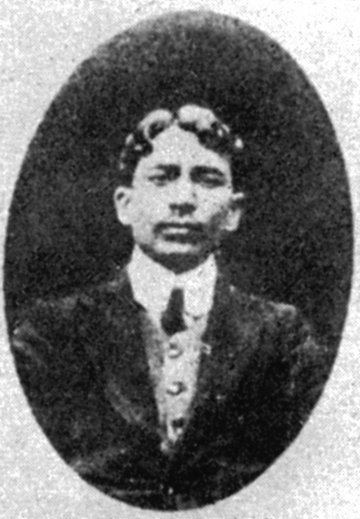
Madan Lal Dhingra
‐
Student and radical Indian nationalist
Place of birth
Date of arrival to Britain
Location(s)
London
N7 8TT
United Kingdom 108 Ledbury Road
Bayswater
London
W11 2AG
United Kingdom
Place of death
Pentonville Prison, London
Date of time spent in Britain
1906–9
About
Madan Lal Dhingra was the sixth of seven children of a civil surgeon. All six sons studied abroad. In June 1906 Dhingra left Amritsar for Britain. He enrolled in University College, London to study engineering.
Dhingra arrived in London a year after the foundation of Shyamaji Krishnavarma's India House. This organization in Highgate was a meeting-place for Indian radicals. They had weekly meetings, which Dhingra would often attend. V. D. Savarkar became manager of India House and inspired Dhingra's admiration for the cult of assassination. However, Dhingra became aloof from India House and was known to undertake shooting practice at a range on Tottenham Court Road. On 1 July 1909 he attended an 'At Home' hosted by the National Indian Association at the Imperial Institute. At the end of the event, as the guests were leaving, Dhingra shot Sir Curzon Wyllie, an India Office official, at close range. His bullets also hit Dr Lalcaca, a Parsee doctor, who was killed.
Dhingra was immediately arrested. At his trial Dhingra represented himself, although he did not recognize the legitimacy of the court. He claimed that he had murdered Curzon Wyllie as a patriotic act and in revenge for the inhumane killings of Indians by the British Government in India. He was found guilty and sentenced to death. He was executed at Pentonville Prison on 17 August 1909.
Assassination of Sir William Hutt Curzon Wyllie at Imperial Institute, South Kensington, 1 July 1909
Curzon Wyllie, David Garnett (met briefly at India House and arranged publication of Dhingra's statement in Daily News), Shyamaji Krishnavarma, V. D. Savarkar.
Datta, V. N., Madan Lal Dhingra and the Revolutionary Movement (New Delhi: Vikas Publishing House, 1978)
Dhingra, Leena, ‘Dhingra, Madan Lal (1883–1909)’, Oxford Dictionary of National Biography (Oxford University Press, 2008) [http://www.oxforddnb.com/view/article/71628]
Garnett, David, The Golden Echo (London: Chatto & Windus, 1953)
Tickell, Alex, Terrorism, Insurgency and Indian-English Literature, 1830–1947 (New York: Routledge, 2012)
Visram, Rozina, Asians in Britain: 400 Years of History (London: Pluto Press, 2002)
L/P&J/6/986, India Office Records, Asian and African Studies Reading Room, British Library, St Pancras
Criminal Files, National Archives, Kew, UK
For image and copyright details, please click "More Information" in the Viewer.
The only lesson required in India today is to learn how to die and the only way to teach it is by dying ourselves, and so, I die and glory in my Martyrdom. Bande Mataram.
Daily News (18 August 1909)
Image credit
Madan Dhingra, from Punjab State Archives
Public domain, via Wikimedia Commons, https://commons.wikimedia.org/wiki/File:Madan_Dhingra.jpg
